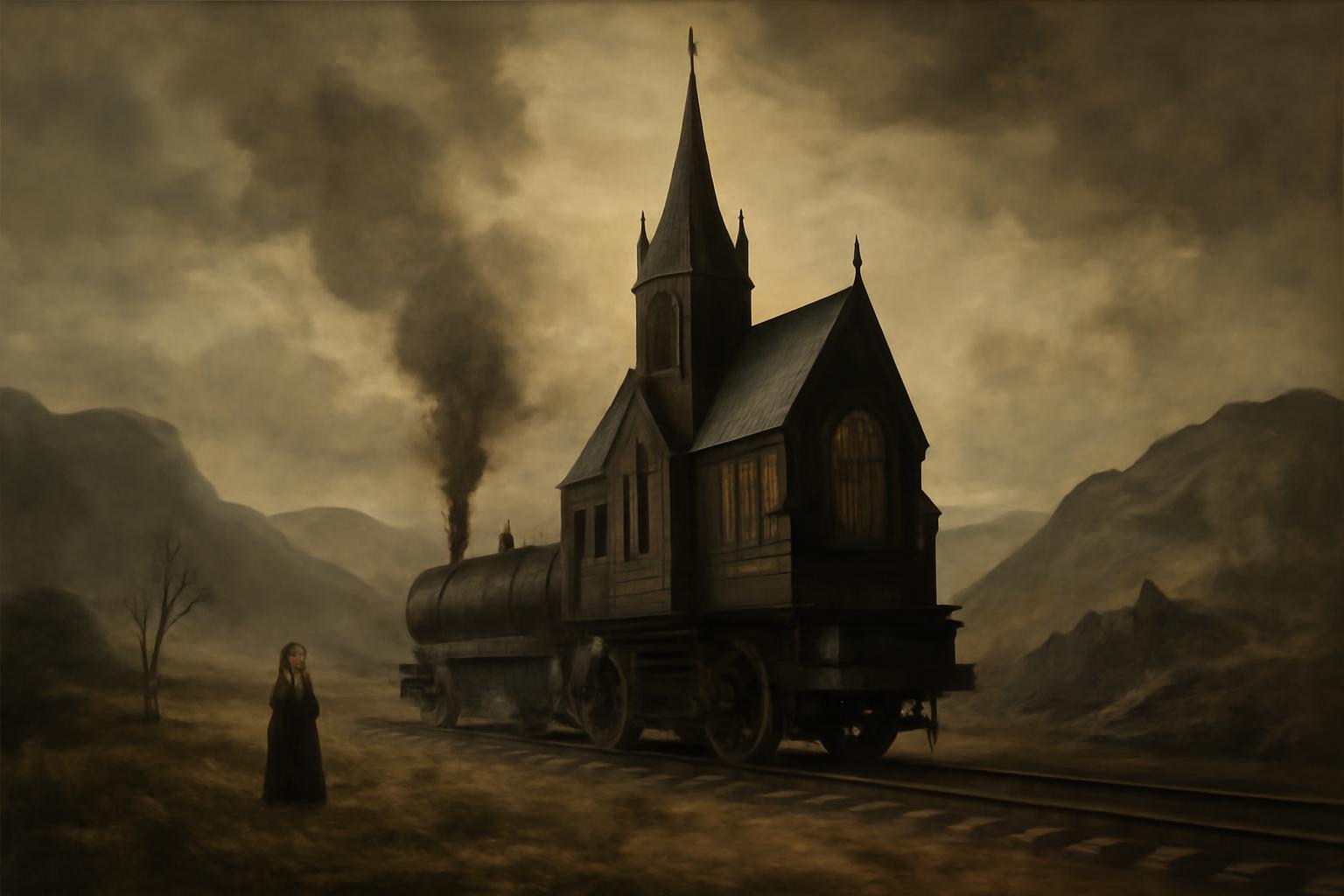The red wooden church, modest in its ancient stubbornness, is being persuaded to yield to the earth’s unquiet appetite, its 113 years a prayer pressed into timber that trembles at the touch of modern fate. It sits—forty meters of weathered grace—upon a lattice of steel and rails, a ship of piety lumbering along two gleaming lines with fifty‑six axles, steered by a hand that wields an unusually long joystick as if to command not wind and tide but the very geology of a town’s remaining memory. It is livestreamed, as if the act could be sacralized by public gaze, the gaze itself an added weight upon the moment when a sacred site consents to be moved, not destroyed, into the maw of a mine that breathes beneath the city’s center.
Three years of careful, clinical planning culminate in this day, the planners’ blueprints fluttering like dry leaves in the northern wind. A new road, twenty-four meters wide, is carved through earth and time to permit the pilgrimage of rails and timber to slide in tandem with the mine’s hungry heartbeat. And yet this path of progress—straight as a tax collector’s ledger—necessitates the displacement of entire neighborhoods. Some 3,000 structures must be demolished or relocated, a geography rearranged to soothe the earth’s tremors caused by ore drawn from the ground beneath. The town speaks with a double tongue: many cling to mining for livelihood, while the Sami—those shepherds of the reindeer and guardians of ancestral grazing grounds—lift their faces in fear, sensing in the shifting land a map that erases stories they know by hoofbeat and star.
Meanwhile, beneath the ice and iron, the mine reveals a rare earth bounty whose worth in the modern myth is second only to its capacity to power wind turbines and electric motors. The discovery—a prize for the age’s desire—stands as a brutal emblem: we measure progress in minerals, not in the preservation of those fragile forms of life that cannot be monetized in the ledger of a corporation. The center of Kiruna, as if to echo a Greek tragedy, is being dissolved into a new epic where the stage is rebuilt as a service corridor for extraction, and the chorus is made up of heavy-lift engineers, livestream viewers, and the quiet, unyielding voices of those who fear loss of land and culture.
Thus we witness the cruel symmetry of modernity: a church moves on rails as if it were a relic of a fallen god humming in the machine’s own language, the ground destabilized by the very appetite that claims to civilize. Nietzsche would have recognized the drama: the will to power wearing a clerical robe, the old values sinking beneath the weight of steel, the abyss not opened in defiance but contracted into a checklist, a timetable, a budget. The gods, if they still haunt the world, seem to have taken the shape of cranes and joystick-guided axles, while the sublime is pressed into a documentary frame for an audience that forgets how to listen to the land’s lament.
And yet the weathered timber of the church—the icon of a culture that once believed in durable meanings—offers no rebuke, only a patient, tragic witness. The sculpture of a community’s memory is being relocated, not annihilated, even as the cost is counted in miles of soil, in grazing lands foregone, in songs unvoiced. In this strange procession, we glimpse the old tragedy anew: that the march of progress is, at its core, a march away from sanctuary toward the pristine arithmetic of exploitation. The result is not merely a town rearranged, but a civilization contending with its own erosion, its own hunger for power, its own inability to stop the worldly machine from turning the wheels of memory into ore.
We stand, then, on the edge of a cliff that Nietzsche warned would come when the starved will to power gazes at its own reflection in a pool of liquid metal. The church, the land, the Sami, the town—all become tokens in a larger theater where the chorus is the hum of engines and the silence that follows the last line of a ruined epic. If the old myths spoke of fate, today fate speaks in the language of logistics: to move a sacred building is to move a civilization’s sense of belonging, and to mine the earth is to mine the very idea of what it means to dwell.
And so we endure, with the melancholy certainty of a civilization that has learned to charm calamity with clever gear and bright screens, yet cannot escape the ache that the hand of time always leaves when the sacred is measured by meters, when a community’s voice is weighed against the price of a future that gleams with wind turbines and electric motors but forgets how to sing in the old key. Memento mori, we murmur, not to surrender but to remind ourselves that the deepest tragedy is not the loss of a church alone, but the slow erasure of a culture that once believed the world could be kept in harmony with reverent memory.
